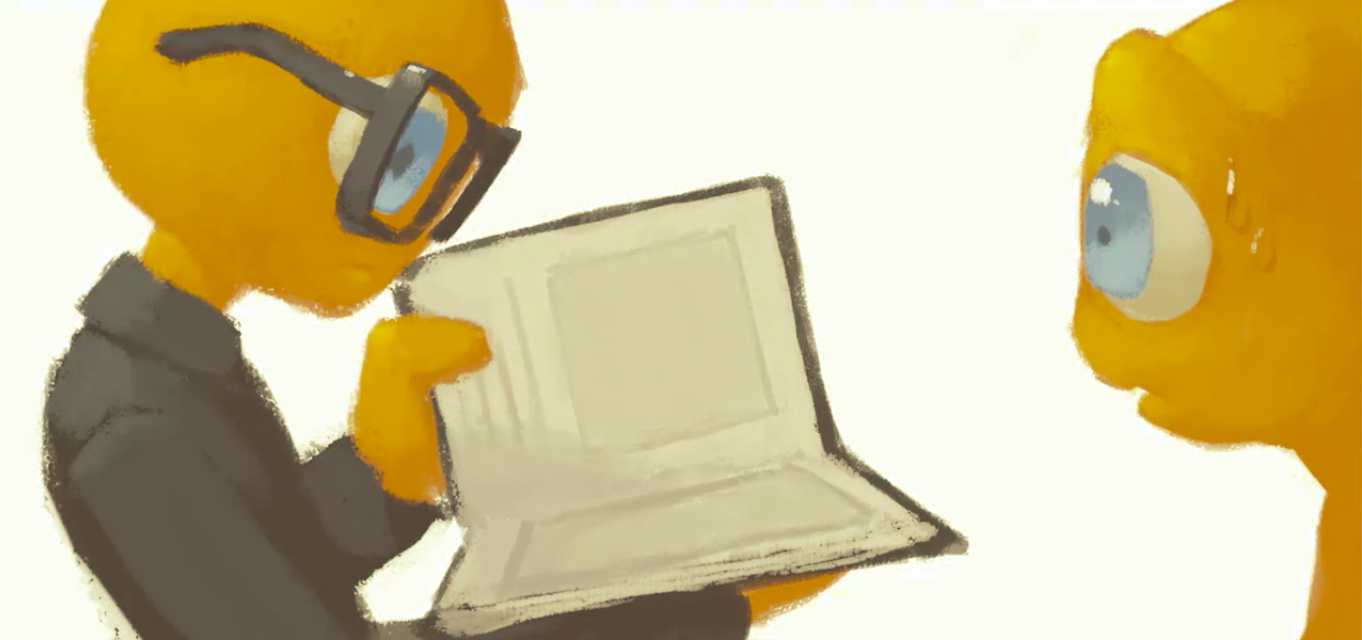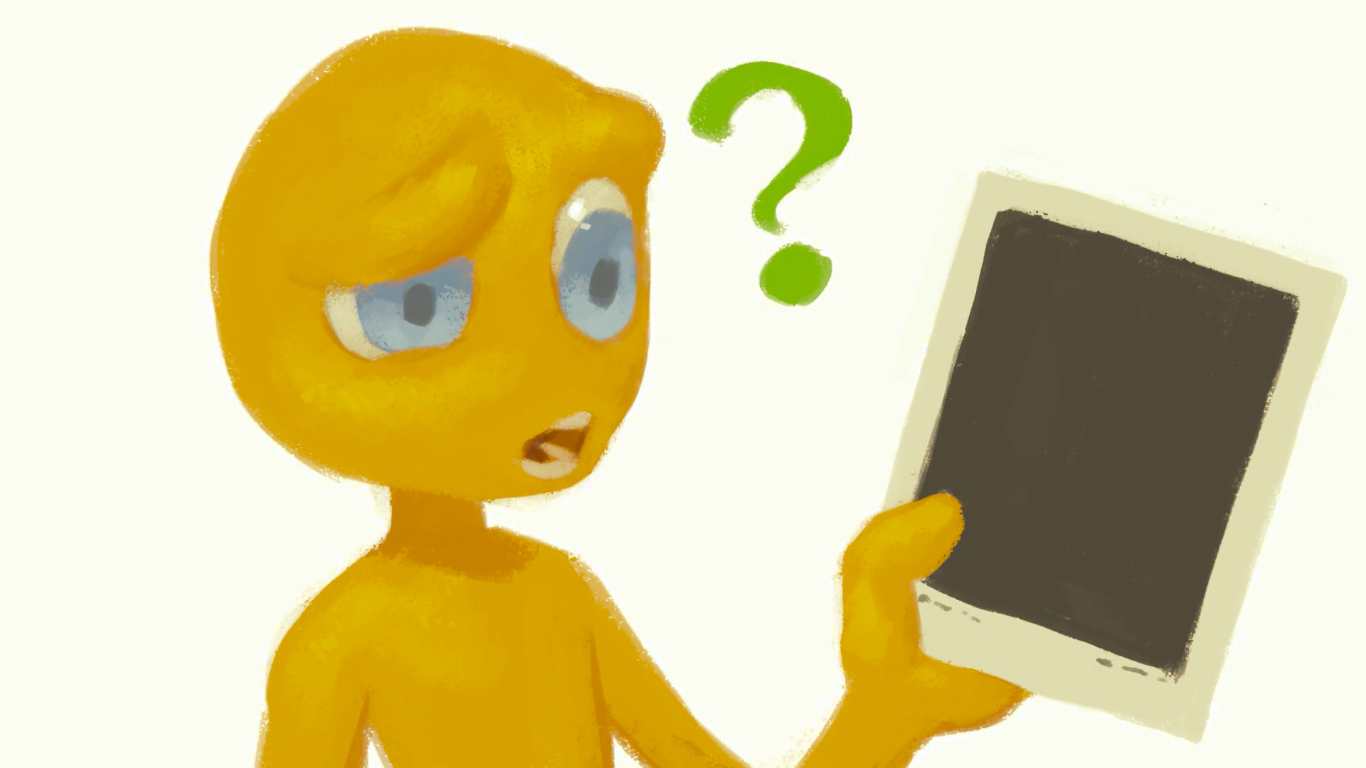
Your current skill set, your specialties, your professionalism - it’s all in there.
A portfolio is a representation of yourself as an artist. The question is: how do you want to represent yourself to your potential future employer?
To create an effective cg artist's portfolio, be sure to spell-check everything, choose the right artwork, and present it all in a clean, effective nondistracting way. In this article, we'll cover these tips and more to help your portfolio shine!
The creative industry today is more competitive than ever and you are competing against experienced artists.
You may be the best game character designer among your friends, but being a big fish means nothing if you are swimming in a little pool. The competition is fierce, so don’t waste time sending out an “OK” portfolio.
Are you sufficiently terrified yet? Good. Let’s get down to business. 👇
First Things First: Spellcheck
Even though you’re not applying for a job at the Marriam-Webster dictionary, grammatical errors, bad spelling or sloppy formatting are quick ways to get your portfolio or cover letter thrown in the NOPE! pile.
How to Choose the Artwork for Your Portfolio

How much is too little...or too much?
The golden rule is to aim for at least 10 pieces to show that you have a solid body of work to build on.
Respect the reviewer’s time and limit your selection to 25 pieces; more could signal that you are indecisive.
When selecting the art to include, focus on the job you want. If that is a character artist, have characters. If you love drawing dinosaurs and feel this relates to your job, include your favorite T-Rex vs. raptor battle in watercolor.
Don’t be a jack of all trades: keep it relevant and focused.
Organizing the selected artwork is a science, too. For maximum impact, use your best two artworks as the first and last piece in your portfolio.
To ensure a pleasant flow to your portfolio, group your artworks by themes or styles to make the whole document feel organized.
If you must include a piece you feel is a bit weaker, make sure to place it between some of your strongest work to achieve a consistent level of quality.
Show Your Employer What You're Made Of

An employer is looking for your underlying skill set and your potential to grow. Your understanding of shape language, lighting and anatomy is something that you can’t fake. If it’s not up to par, go back to the basics.
The proverbial chain is as strong as its weakest link, and so is your portfolio. Assume that your employer will judge you by the weakest piece.
Be prepared for that piece to be brought up during a personal interview. Make sure to be able to talk about that piece and why you decided to include it; perhaps there are elements of it that you feel make up for the overall lower quality? Whatever it is, do not get defensive; a strong artist is, above all, willing to learn and accept critique.
Design Your Portfolio in a Way That Lets Your Work Shine

The design of each page is as important as the work you are displaying. Stick with a simple, neutral background.
Are you thinking of going with a theme? Don’t. Let your work shine, and don’t distract from it with gimmicky elements.
Leave enough space between pieces to let your art breathe. When in doubt, leave more space (and be consistent with art placement on the page).
For classic, simple design, leaf through a coffee table art or design book at a bookstore to see how images are placed on pages to give them sufficient space.
Look online for examples of portfolio styles you like to get a feel for what is out there. Far from making you a copycat, this will help you refine your own approach and taste to what your portfolio should look like.
A hand signature on your artwork is fine if that is something you do already, while a watermark is a big no-no in a professional portfolio.
The Best Way to Print Your Portfolio

This is where hope goes to die and paper jam error #438 flashes on the monitor forever:
Welcome to the printing room!
To accomplish this as pain-free as possible, do test batches, plan your page layout wisely, take a deep breath, and allow ample time to fine-tune the print.
The night before you plan on sending in your portfolio is about three days too late.
Rule of thumb: use CMYK, lighten your image slightly, and lower the contrast.
Press the print button. Tear the result to pieces, tweak, and repeat 16 more times.
Conclusion
For artists, your portfolio is you. It's the thing that gives viewers a first impression of you, your talent, and your interests.
Take the time to give it just as much attention and love as you did on the artwork you included While avoiding adding extra fluff in portfolio themes or site navigations. Make your work easy to view and digest without distraction.
Happy creating!
Related Reading:

Why aren't we supposed to watermark artwork? sorry ive watermarked most of my portfolio peices so i wanna know if i should remove the watermark and why
@pkaron I agree, helping each other is essentially a team effort in order to keep ourselves attractive in the job market as well as developing on a personal level. But I just expect others not to be as helpful, expecting themselves to get the job in question without the threat of competition - because less competition means more attractive opportunities and valued competence. The approach of modeling, texturing, animation require(s) less of a formal degree and thus the branch becomes at risk of diluting the area of expertise with too many doing the same thing.
oohem Interesting point. I find that helping other people, even those you are in competition with, is always beneficial. For your perception of yourself ("Yay, I'm a good person!"), for strengthening your relationship with the person you're helping ("Yay, we're good friends!"), for inspiring other to do the same ("Yay, let's help each other!"). And for karma points, of course ;) So worth it.
What I'm a bit concerned with is the following: If I'm at competition with others in the same branch, why would they help me jeopardizing their potential position? If I improve my own work to the point I get employed (by the feedback), then they have essentially put themselves at disadvantage.
It's not that I don't mind help or helping others, just conveying a perspective.
Great, now I feel wiser and more scared at the same time :D